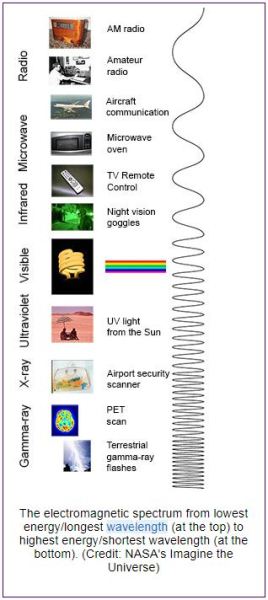The spacecraft is on its way to a unique metal-rich asteroid, orbiting the Sun between Mars and Jupiter. Scientists believe this asteroid is the nickel-iron core of an early planet, studying which could provide unique insights into the impenetrable iron core of our own planet.
Simultaneously, it will also carry out another mission that might hold the key to future space exploration. What is this mission, and what does it have to do with ‘space lasers’
Space communication’s data rate problem
Communicating with spacecraft far away from Earth poses many challenges, of which the problem of data rates might be the most critical. Simply put: how does a spacecraft transmit vast amounts of data over extremely long distances, all while itself moving at rapid speeds?
Like wireless communications on Earth, spacecraft encode data on various bands of electromagnetic frequencies. Currently, most space communication is carried out using radio waves — having the highest wave lengths but lowest frequencies in the electromagnetic spectrum.


However, higher bandwidths (range of frequencies) carry more data per second. Thus, scientists would ideally like to transmit data at the highest bandwidths possible to increase the rates of data transfer. But this throws up its own set of challenges.
Radio waves are more widely used for communication than other electromagnetic waves primarily because of their desirable propagation properties, stemming from their large wavelength. What this means is that they have the ability to pass through the atmosphere regardless of weather, pass through foliage and most building materials, as well as bend around obstructions. Shorter wavelengths tend to scatter when in contact with any interference.
NASA’s revolutionary new technology
This is where NASA’s Deep Space Optical Communications (DSOC) experiment comes in — pioneering the use of near-infrared laser signals for communication with spacecraft. Much like fibre optics replacing old telephone lines on Earth, NASA says that DSOC will allow data rates at least 10 times higher than state-of-the-art radio telecommunications systems of comparable size and power, enabling higher resolution images, larger volumes of science data, and even streaming video.
The Psyche spacecraft is the first to carry a DSOC transceiver, and will be testing high-bandwidth optical communications to Earth during the first two years of the spacecraft’s journey to the main asteroid belt. The tech demo achieved “first light” in the early hours of November 14 after this transceiver locked onto a powerful uplink laser beacon transmitted from the Optical Communications Telescope Laboratory at the NASA’s Table Mountain Facility near Wrightwood, California.
But given the limitations on propagation of higher bandwidths, how does this technology work? “Extremely precise pointing,” says a NASA report. “The flight laser transceiver and ground-based laser transmitter will need to point with great precision. Reaching their targets will be akin to hitting a dime from a mile away while the dime is moving,” the report says. A dime, or a 10 cent coin, is less than 2 cm in diameter.
To achieve this, the transceiver aboard the spacecraft needs to be isolated from the craft’s vibrations. Moreover, since the positions of Earth and the spacecraft will be constantly changing as the photons travel, the DSOC ground and flight systems will need to compensate, pointing to where the ground receiver and flight transceiver will be when the signal arrives. Lastly, given the distance between the spacecraft and Earth, new signal-processing techniques will be utilised to squeeze information out of the weak laser signals transmitted over the vastness of space.
Preparing for the future of space travel
In 2013, NASA’s Lunar Laser Communications Demonstration tested record-breaking uplink and downlink data rates between Earth and the Moon using similar technology. DSOC, however, is taking optical communications into deep space, paving the way for high-bandwidth communications far beyond the Moon and over a 1,000 times farther than any optical communications test to date.
Why does this matter? With humanity’s ambitions to travel in space, far beyond the Moon, improving communications technology is crucial.
As Trudy Kortes, director of Technology Demonstrations for the Space Technology Mission Directorate at NASA put it: “Achieving first light is one of many critical DSOC milestones in the coming months, paving the way toward higher-data-rate communications capable of sending scientific information, high-definition imagery, and streaming video in support of humanity’s next giant leap: sending humans to Mars.”

Shambhu Kumar is a science communicator, making complex scientific topics accessible to all. His articles explore breakthroughs in various scientific disciplines, from space exploration to cutting-edge research.



